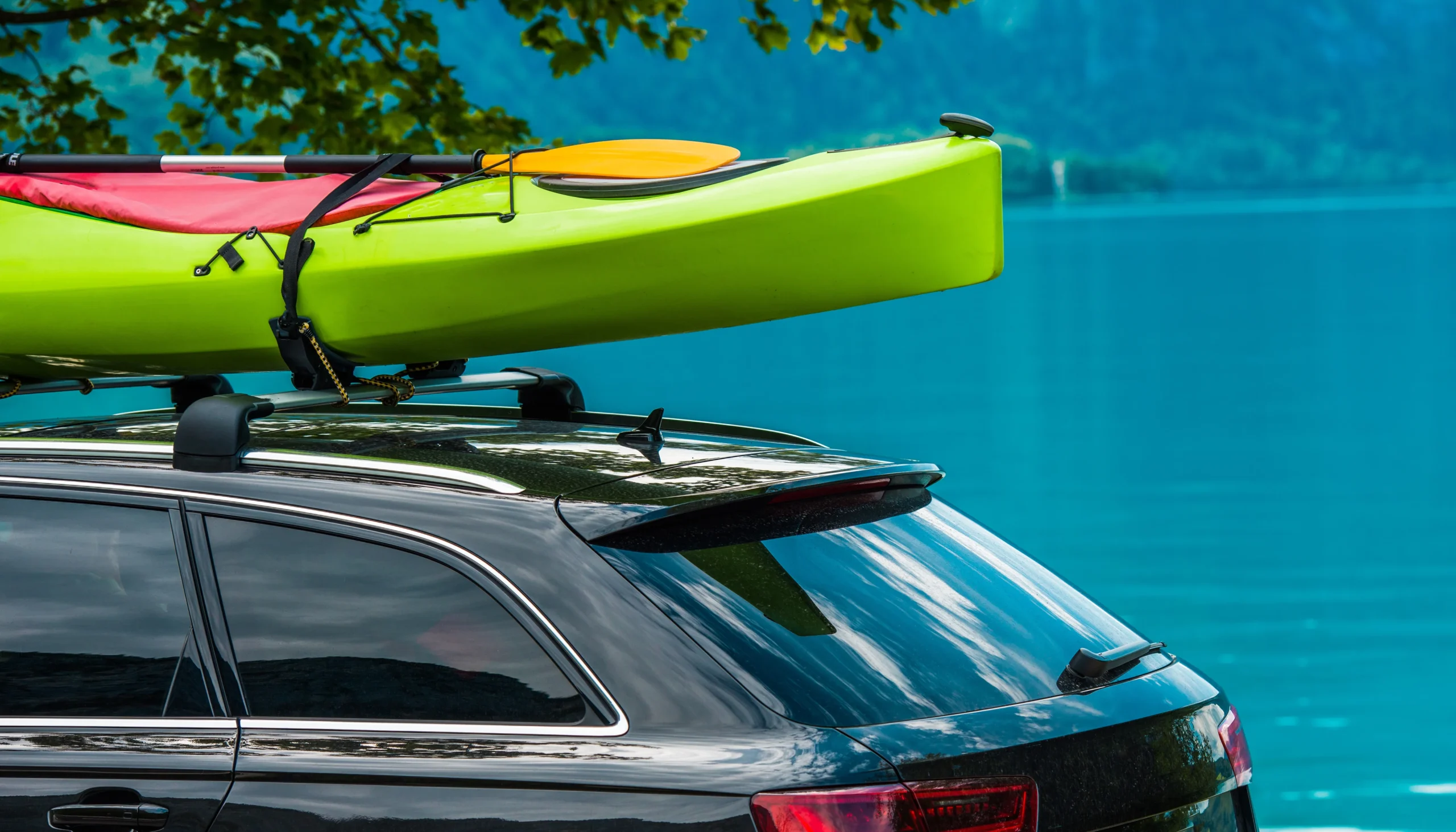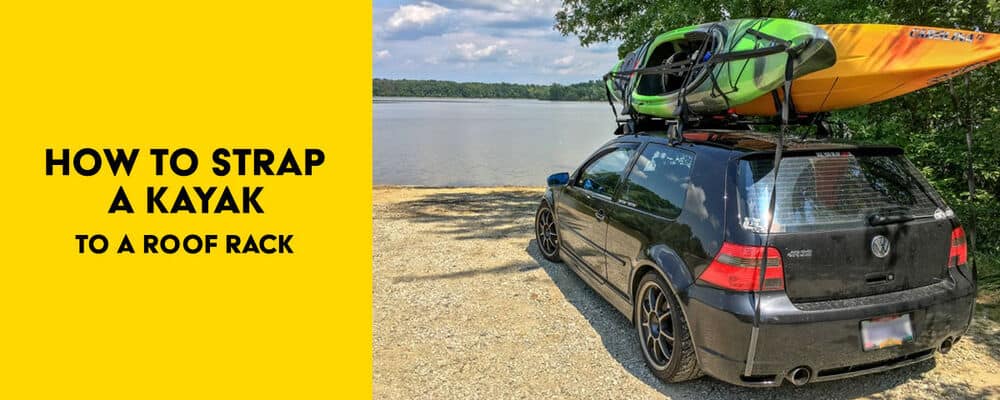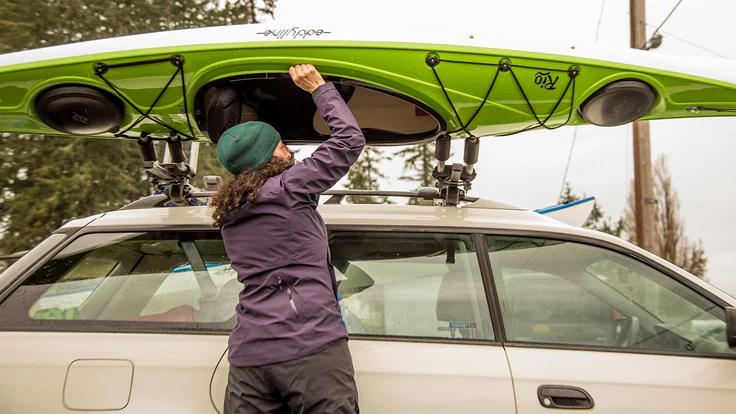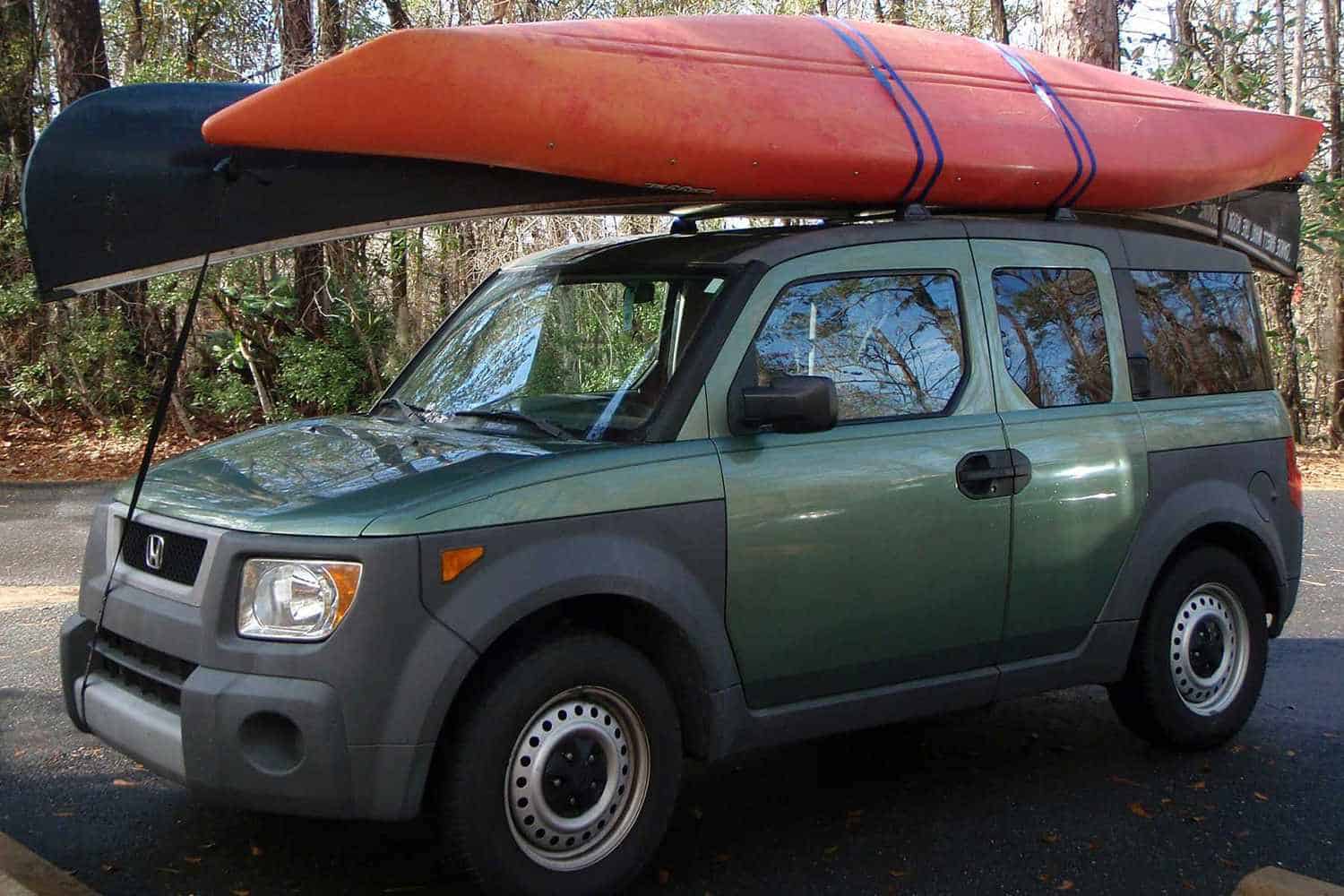As an avid kayaker, I have learned the hard way that properly securing your kayak is absolutely essential. Not only does it prevent accidents and damage to your precious vessel, but it also ensures a stress-free and enjoyable journey to your favorite paddling spot. One of the best ways to secure your kayak during transportation is by using a roof rack. But, how to secure kayak to roof rack?
In this comprehensive guide, I will walk you through everything you need to know about choosing the right roof rack for your kayak, preparing your kayak for transport, loading and securing it onto the roof rack, as well as unloading and storing it safely.
Key Takeaways
- Properly securing your kayak to a roof rack is essential for safe transport.
- Choosing the right roof rack for your kayak is important for a secure fit.
- Preparing your kayak for transport includes cleaning and removing any loose items.
- Loading your kayak onto the roof rack requires assistance and proper lifting techniques.
- Securing your kayak to the roof rack involves using straps and tie-downs in a specific order.
Choosing the Right Roof Rack for Your Kayak
When it comes to choosing a roof rack for your kayak, there are several options available on the market. The most common types include J-style racks, saddle-style racks, stacker racks, and foam blocks with straps. Each type has its own advantages and disadvantages depending on factors such as ease of use, security level provided, and compatibility with different types of kayaks.
Before making a decision on which roof rack to purchase or use for transporting your kayak, there are some important factors you should consider. These include the weight capacity of the roof rack system compared to the weight of your kayak(s), compatibility with different vehicle models (including whether or not you have existing crossbars), ease of installation and removal when not in use.
Preparing Your Kayak for Transport
Before loading your kayak onto any type of roof rack system or transporting it in any way, there are some crucial steps you should take to ensure its safety during transit. Firstly, give your kayak a thorough cleaning both inside and out using mild soap or detergent specifically designed for watercrafts.
Once cleaned thoroughly inside out make sure that all loose items such as fishing gear or personal belongings are removed from both inside compartments as well as any external storage areas. These loose items can become projectiles during transportation and cause damage to your kayak or even pose a safety hazard on the road.
Lastly, it is important to protect your kayak from scratches and dents that may occur during transportation. You can use foam padding or pool noodles to cushion the contact points between your kayak and the roof rack system. Additionally, consider investing in a protective cover specifically designed for kayaks to provide an extra layer of protection against road debris and harsh weather conditions.
How to Load Your Kayak onto Your Roof Rack
| Step | Description |
|---|---|
| 1 | Position your kayak parallel to your vehicle, with the bow facing forward. |
| 2 | Lift the kayak onto the roof rack, placing it on its side. |
| 3 | Secure the kayak to the roof rack using straps or tie-downs. |
| 4 | Adjust the kayak’s position on the roof rack so that it is centered and balanced. |
| 5 | Double-check that the kayak is securely fastened to the roof rack before driving. |
Loading your kayak onto a roof rack system may seem like a daunting task, but with the right technique, it can be done safely and efficiently. Here is a step-by-step guide that I have found helpful over the years:
1. Position your vehicle near an open space where you have enough room to maneuver around without any obstacles.
2. Open all doors of your vehicle including the rear hatch if applicable.
3. Lift one end of your kayak and place it on one side of the roof rack system, ensuring that it is centered.
4. Walk around to the other side of your vehicle while holding onto both ends of the kayak.
5. Lift the other end of your kayak and carefully place it on top of the other side of the roof rack system.
6. Adjust its position so that it is centered on top of both sides evenly.
When lifting and positioning your kayak onto the roof rack, remember to use proper lifting techniques by bending at your knees instead of straining with just your back muscles alone.
Securing Your Kayak to The Roof Rack: Step-by-Step Guide
Once you have successfully loaded your kayak onto the roof rack system, securing it properly is crucial for safe transportation without any mishaps along the way.There are several methods you can use depending on personal preference or convenience:
1. The most common method involves using straps with cam buckles. Start by threading the strap through the front grab handle of your kayak, then wrap it around the crossbar of your roof rack system and back through the rear grab handle. Repeat this process on both sides of your kayak, ensuring that the straps are tight and secure.
2. Another method is using ratchet straps. These provide extra tension and security compared to regular straps with cam buckles. Follow a similar process as mentioned above, but instead of using cam buckles, use ratchet mechanisms to tighten the straps until they are firmly secured.
3. If you have a J-style or saddle-style roof rack system, you can also use these built-in features to secure your kayak without additional straps. Simply place your kayak into the J-cradle or saddle-shaped brackets and ensure that it is snugly fitted before tightening any built-in securing mechanisms.
Regardless of which method you choose, always double-check that your kayak is securely fastened before hitting the road. Give each strap a firm tug to ensure there is no slack or movement in any direction.
Tips for Securing Multiple Kayaks on a Roof Rack
If you’re planning on transporting multiple kayaks on a roof rack system, there are some additional precautions you should take to avoid damage and accidents during transit:
1. Use foam padding or pool noodles between kayaks: This will prevent them from rubbing against each other during transportation and minimize scratches or dents.
2. Alternate directions: Place one kayak facing forward while placing another facing backward. This helps distribute weight evenly across both sides of the roof rack system.
3. Use additional tie-downs: In addition to securing each individual kayak with its own set of straps, consider using additional tie-downs across all kayaks for added stability.
By following these tips, you can safely transport multiple kayaks without worrying about them shifting or causing damage along the way.
How To Secure Your Kayak in Windy Conditions
Transporting your kayak in windy conditions can be challenging, but with the right precautions, you can ensure its security and prevent any accidents. Here are some tips to help you secure your kayak during windy weather:
1.Reduce wind resistance: If possible, position your kayak on the roof rack system so that it is facing forward. This reduces wind resistance and minimizes the chances of it catching strong gusts of wind.
2.Use additional straps: In addition to the regular straps used for securing your kayak, consider using extra straps or bungee cords to provide additional support against strong winds. These can be attached from various points on your vehicle to different parts of the kayak.
3.Check frequently: During transit in windy conditions, make sure to pull over periodically and check that all straps are still tight and secure. Strong winds can cause them to loosen over time.
By taking these precautions, you can have peace of mind knowing that your kayak is securely fastened even when faced with challenging weather conditions.
Checking Your Kayak’s Security During Transport
While driving with a secured kayak on top of your vehicle, it is important to periodically check its security throughout the journey. Here are some signs you should look out for that indicate your kayak may be loose or shifting:
1. Unusual noises: If you hear any rattling or banging sounds coming from above while driving, it could mean that something has come loose or shifted.
2. Movement in rearview mirror: Glance at your rearview mirror occasionally to see if there is any visible movement or shifting of the kayaks.
3. Increased wind noise: If there is an increase in wind noise coming from above while driving at high speeds, it could indicate that one or more kayaks have become loose.
If you notice any of these signs during transit, find a safe place to pull over as soon as possible and inspect the security of your kayak. It is better to address any issues promptly rather than risk further damage or accidents.
Unloading Your Kayak from the Roof Rack
Once you have arrived at your destination, unloading your kayak from the roof rack system should be done with caution to avoid any injuries or damage. Here is a step-by-step guide for safely unloading your kayak:
1. Park in an open area away from traffic and ensure that there are no obstacles around.
2. Open all doors of your vehicle including the rear hatch if applicable.
3. Loosen and remove all straps securing your kayak to the roof rack system.
4. Carefully lift one end of the kayak and slide it off the roof rack, ensuring that it does not hit any part of your vehicle during this process.
5. Walk around to the other side of your vehicle while holding onto both ends of the kayak.
6. Lift the other end of your kayak and gently slide it off the roof rack system.
Remember to use proper lifting techniques by bending at your knees instead of straining with just your back muscles alone. Take it slow and steady, ensuring that you have full control over each movement.
Storing Your Kayak Safely After Transport
After a successful kayaking adventure, storing y our kayak safely is essential to ensure its longevity and prevent any damage.
One of the best ways to store your kayak is by using a kayak rack or hoist system. These systems allow you to store your kayak off the ground, protecting it from potential damage caused by moisture, pests, or accidental bumps.
Additionally, storing your kayak upside down can help prevent warping or deformation of the hull. It is also important to find a storage location that is dry, well-ventilated, and away from direct sunlight. By taking these precautions, you can ensure that your kayak remains in optimal condition for future adventures.
FAQs
What is a roof rack?
A roof rack is a set of bars that are attached to the roof of a vehicle to carry items such as kayaks, bikes, and luggage.
What are the benefits of using a roof rack to transport a kayak?
Using a roof rack to transport a kayak is a safe and secure way to transport your kayak. It also frees up space inside your vehicle and allows you to transport other items.
What are the different types of roof racks?
There are two main types of roof racks: factory-installed roof racks and aftermarket roof racks. Factory-installed roof racks are installed by the vehicle manufacturer, while aftermarket roof racks are installed by the owner.
What are the different types of kayak roof racks?
There are several types of kayak roof racks, including J-cradles, saddles, stackers, and rollers. Each type of roof rack has its own advantages and disadvantages.
How do I properly secure my kayak to a roof rack?
To properly secure your kayak to a roof rack, you should use straps or tie-downs to secure the kayak to the roof rack. You should also use bow and stern lines to prevent the kayak from moving forward or backward.
What are some safety tips for transporting a kayak on a roof rack?
Some safety tips for transporting a kayak on a roof rack include checking the roof rack and kayak for damage before each use, securing the kayak properly to the roof rack, and driving at a safe speed.




